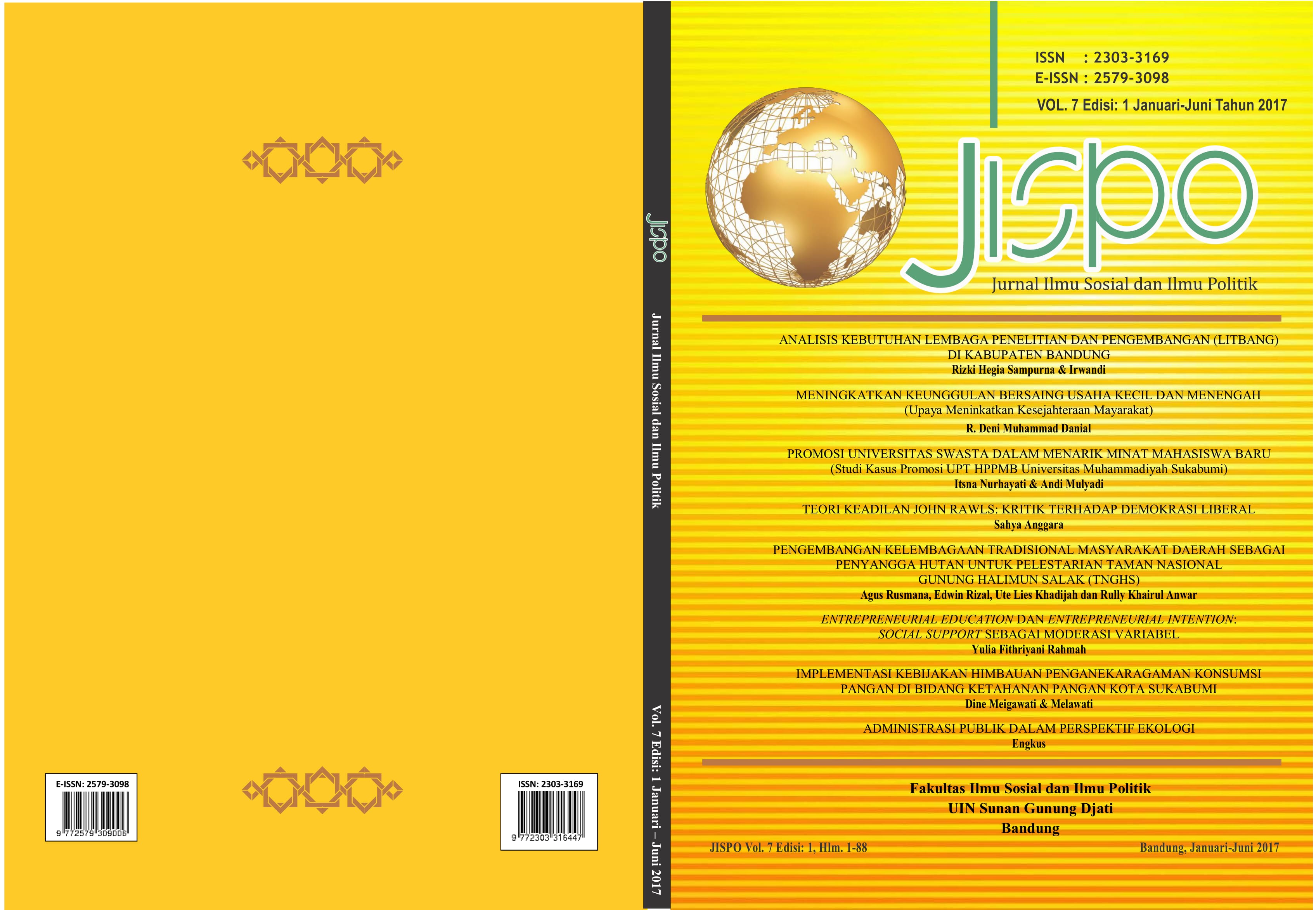ADMINISTRASI PUBLIK DALAM PERSPEKTIF EKOLOGI
DOI:
https://doi.org/10.15575/jp.v7i1.1739Keywords:
Public Administration, Administrative Ecological Factors, ResourcesAbstract
References
Abdurrachman, 1987. Beberapa Pemikiran tentang Otonomi Daerah. Jakarta: Media Sarana Press. Lind, L. R. Economic Man in Ancient Athens. The Classical Journal,Vol. 35, No. 1, pp. 27-38 Boayke-Sarpong, Kwame. 1996. Bureaucracy and Development in the emerging Nation: An Ecological Approach. Research Review,Vol. 14 No. 1, pp. 1-15 Chapman, Richard A. 1996. Prismatic Theory in Public Administration: Past, Present, and Future. Public Administration Quarterly, Fall, pp. 343-363. Pamudji. 1993. Ekilogi Administrasi Negara. Jakarta: Bumi Aksara. Pruessner, A. H. 1920. Date Culture in Ancient Babylonia. The American Journal of Semitic Language and literatures, Vol.36, No. 3, pp. 213-232. Riggs, Fred W. 1980. Public Administration Review, MarchApril, pp. 107-115. Schmandt-Besserat, Danise. 1981. Decipherment of the Earliest Tablets. Science, New Series, Vol. 211, No. 4479, pp. 283-285.
Singh, Amita. 2005. Indian Administratif Theory: Context and Epistemology. Administrative Theory & Praxis Vol. 27, No. 1, pp.51-80. Tummala, Krishna K. Tummala. 2000. An Essay on Comparative Administration. Public Administration Riview , Vol. 60, No. 1. Division for public Economics and Public Administration Departement of Economic and Social Affairs Persatuan Bangsa-Bangsa (1997). Rethinking Public Administration: an Overview. Weisman, Martin. 1993. The Ecology of Strategic management in Small Local Government. Public Administration Quarterly, Summer, pp. 145159. Undang-Undang Nomor 22 Tahun 1999 tentang Pemerintah Daerah. Undang-Undang Nomor 5 Tahun 2014 tentang Aparatur Sipil Negara. Undang-Undang Nomor 9 Tahun 2015 tentang Pemerintahan Daerah.
dulkiah, m. (2016). Pemanfataan Media Dalam Memahami Realitas Sosial Di Kalangan Mahasiswa UIN SGD Bandung. JISPO : Jurnal Ilmu Sosial Dan Ilmu Politik, 1(1), 12-23. doi:http://dx.doi.org/10.15575/jispo.v1i1.711
Downloads
Published
How to Cite
Issue
Section
Citation Check
License
Authors who publish their manuscripts in JISPO agree to the following terms:
- Authors retain copyright and grant the journal right of first publication with the work simultaneously licensed under a Creative Commons Attribution-ShareAlike 4.0 International License that allows others to share the work with an acknowledgment of the work's authorship and initial publication in this journal;
- Authors are able to enter into separate, additional contractual arrangements for the non-exclusive distribution of the journal's published version of the work (e.g., post it to an institutional repository or publish it in a book), with an acknowledgment of its initial publication in this journal; and
- Authors are permitted and encouraged to post their work online (e.g., in institutional repositories or on their websites) after publication process, or prior to and during the submission process, as it can lead to productive exchanges, as well as earlier and greater citation of published work (See The Effect of Open Access).




.jpg)



